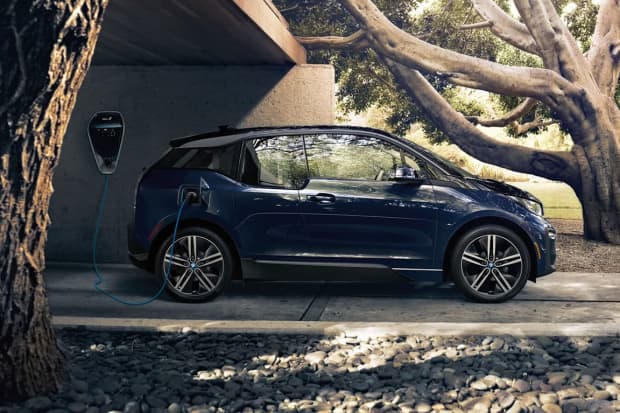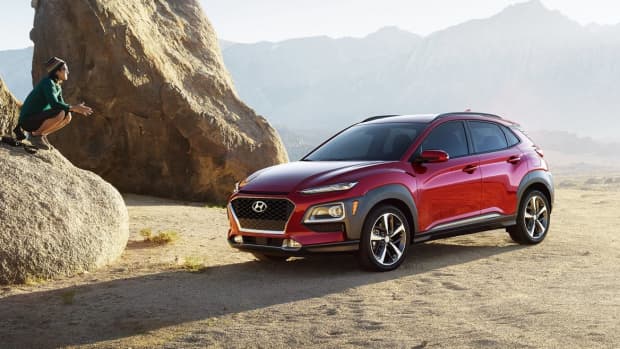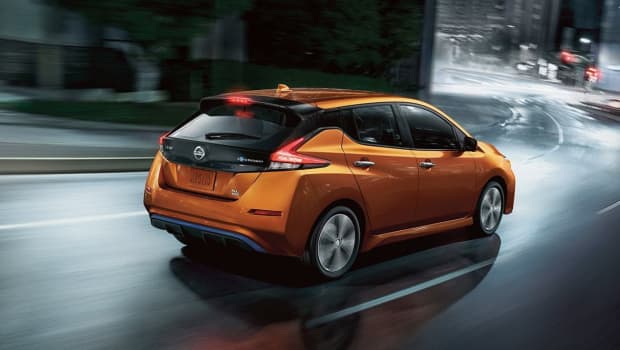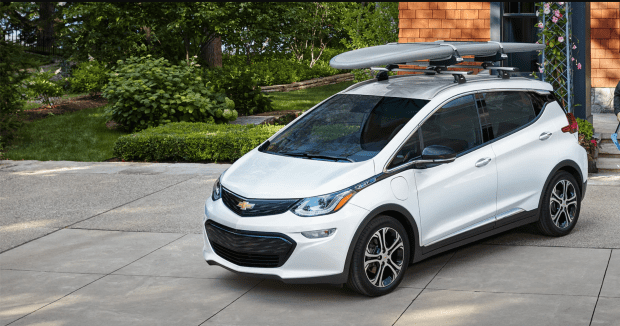This post was originally published on this site
Electric vehicles are on the precipice of gaining serious nationwide popularity. New EVs are arriving each year from just about every automaker — and good ones, too. The new generation of EVs is edging ever closer to 400 miles per charge. That’s impressive. And long-range capability may be the critical driver for mainstream Americans converting from gas to electric.
Today, EVs make up a small part of the new cars on the road — around 2%. Still, even 1% of the 15 million new cars and trucks sold each year is a lot of vehicles. And that figure is projected to proliferate. Some are projecting a bump to 2.5% by the end of 2021. Here are the 10 most popular EVs from last year.
10. Hyundai Ioniq EV
Total units sold: 1,536
The Ioniq is Hyundai’s
HYMTF,
Prius doppelgänger. It’s offered as a traditional hybrid, a pure electric, or a plug-in hybrid. The electric, with a range of 170 miles, is on the low end for modern EVs. However, the Ioniq’s low price point help makes it a viable option. After the $7,500 tax credit, this is essentially a $25,000 car. The Ioniq isn’t a fancy machine. And it drives very much like an electric economy car and serves as a great commuter. This isn’t the vehicle for those looking for sporty EV performance. However, Hyundai is launching an all-new Ioniq 5 next year. It’s a stunning design that looks not unlike a hot hatchback rally car from the 1980s but packing close to 300 miles of electric range. Yes, please.
9. BMW i3

The BMW i3
BMW
Total units sold: 1,724
When the BMW i3 was new back in 2014, there were few EVs on the market. And most of them, aside from Tesla, were designed as city runabouts. That was the vibe of the BMW
BMW,
i3, too. And little has changed. It’s a small car that feels somewhat techy and cool but doesn’t offer a lot of space inside for people or their stuff. There’s no getting around that this is a 7-year-old EV and because of that, its range and packaging seem a little dated. The standard i3 can travel 153 miles on a charge and run to 60 mph in 7.2 seconds. Opt for the gasoline engine range extender, and the number grows to 200 miles. For those that want a sportier ride, the pricier i3 S drops the 0-60 mph time to 6.8 seconds and has the same EV range.
Also see: How much does it cost to charge an electric car? We do the math
8. Jaguar I-Pace

The Jaguar I-Pace
Jaguar
Total units sold: 1,958
Styling may be subjective but few would dispute that the handsome Jaguar I-Pace looks like nothing else on the road. It’s an electric SUV that’s built to stand out. The I-Pace offers a range of 234 miles and is engineered with serious back road agility. This is a fun EV to drive. And it’s one that will zip to 60 mph in just 4.5 seconds. The Jag has performance, but that swoopy design doesn’t deliver quite as much cargo space as some competitors. Also, we found the I-Pace’s infotainment system to be finicky to operate. Still, this tech-forward Jaguar is worth considering for those who want an EV that’s relatively rare on the road and makes a design statement.
7. Hyundai Kona Electric

The Hyundai Kona
Hyundai
Total units sold: 3,021
The Kona Electric is a subcompact crossover that mirrors the Chevy Bolt in terms of range and power. The Kona can hit 258 miles on a charge and offers sprightly acceleration from the 201-horsepower motor. The Hyundai has strong enough regen braking to allow for one-pedal driving. Those who want less aggressive performance can dial back the regen to be more comfortable and more like a conventional crossover. The Kona comes with 250 kWh of charging free from Electrify America. That’s a nice bonus that adds up to about 1,000 miles. Once that runs out, recharging at home on a Level 2 unit takes about 9.5 hours to fully charge a drained battery.
6. Porsche Taycan

The Porsche Taycan
Porsche
Total units sold: 3,336
When it comes to driving fun, few automakers are as adept as Porsche
POAHY,
And the Taycan is not only incredibly engaging to drive but downright stunning to look at. It’s easily one of the sleekest sedans on the road. This 4-door sedan can be had in power levels up to the Turbo S trim with a dizzying 750 horsepower. Taycan models with the 79.2 kWh battery are rated for a range of 200 miles. The Performance Battery Plus models have a 93.4 kWh pack and can hit 225 miles. Those numbers are quite a bit shy of Tesla’s performance. And because this is a Porsche, pricey options can push the top model to nearly $200,000.
Related: The 2021 Porsche Taycan Cross Turismo could be the EV that does it all
5. Audi e-tron
Total units sold: 7,202
Audi’s e-tron is one of only a handful of fully electric SUVs. This is a large midsize SUV with plenty of room inside and a smooth, comfortable, and quiet ride. The e-tron isn’t flashy. Instead, it has the look and feel of a traditional Audi, which some buyers will appreciate. In fact, this Audi looks so much like Audi’s conventional SUVs, most folks won’t even know it’s electric. The e-tron slides in between the Q5 and Q7 in terms of size and there’s a Sportback version for those that like a coupe-like profile. The e-tron’s 222-mile range (218 for the Sportback) is on the low side for an EV in this price class, to be sure. The Audi is a wonderful EV to drive if all-out range is less important than roominess, comfort, and luxury.
4. Nissan Leaf

The Nissan Leaf
Nissan
Total units sold: 9,564
Want to feel old? The Nissan Leaf has been in production for a decade. Yes, we were surprised, too. The original Leaf was an EV pioneer — few electric options existed back then. But the initial range of just 73 miles shows just how far battery tech has come. Today’s Leaf is better to drive in every way. Certain models come with Nissan’s
NSANY,
helpful ProPilot Assist semiautonomous driving assistant. We recommend this great feature for commuting on traffic-packed freeways. The standard Leaf has a 150-mile range, but the Leaf Plus can stretch that number to 226 miles and has over 200 horsepower on tap. Some EVs can travel further on a charge than these Leaf models, but for buyers that don’t need a hefty range, the Nissan is a solid EV at a great price.
Read more: The 2021 Nissan Leaf remains tops for affordability and safety among EVs
3. Chevrolet Bolt EV

The Chevy Bolt
Chevrolet
Total units sold: 20,754
The Bolt is Chevrolet’s first mass-market EV. The subcompact hatchback Bolt is the most popular EV outside the Tesla
TSLA,
universe because it’s priced right and offers great performance. Incentives can push the Bolt’s out-the-door starting price below $30,000. That’s a pretty good deal for a reasonably roomy 5-door. The Bolt has a solid 259-mile electric range, athletic chassis, and plenty of speed thanks to its 200-horsepower motor. And it keeps getting better: The updated 2022 model will have a more supple suspension and the option of Super Cruise. A slightly larger, crossover-esque version called the EUV will provide more legroom in the back seat.
2. Tesla Model S and X

The Model S
Tesla
Total units sold: 57,039 (combined)
Tesla doesn’t break out sales numbers for its specific vehicles like other automakers. Rather, it combines vehicle lines. Tesla’s larger vehicles, the Model S sedan and Model X SUV, combine to be America’s second most popular EVs. Tesla’s Model S has seen modest changes over the years but it remains the same basic vehicle that altered the EV universe back in 2012. The latest Model S claims a range of over 400 miles and can reportedly hit 60 mph in less than 2 seconds. With its innovative Falcon Wing doors, the Model X has provided large SUV utility for families that want that signature Tesla performance. The Model X Long Range can travel 360 miles on a charge, a number that no other electric SUV comes close to hitting.
Read next: The 10 most affordable electric cars on the market
1. Tesla Model 3 and Model Y
Total units sold: 442,511 (combined)
As was the case with the Model S and Model X, Tesla’s sales are combined here, too. That means it lumps together the Model 3 small sport sedan and the Model Y small crossover upon which it’s based. The split is likely skewed slightly in favor of the crossover. But either way, the numbers are staggering — nearly a half-million EVs for the pair is an astonishing number. It has proven that Tesla’s long-range battery packs (up to 353 miles), tech-forward interiors, and sports car acceleration and handling are traits many buyers yearn for. No competitor has come even close.
This story originally ran on KBB.com.

